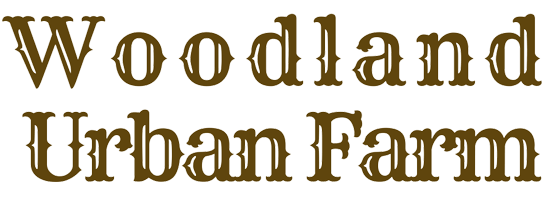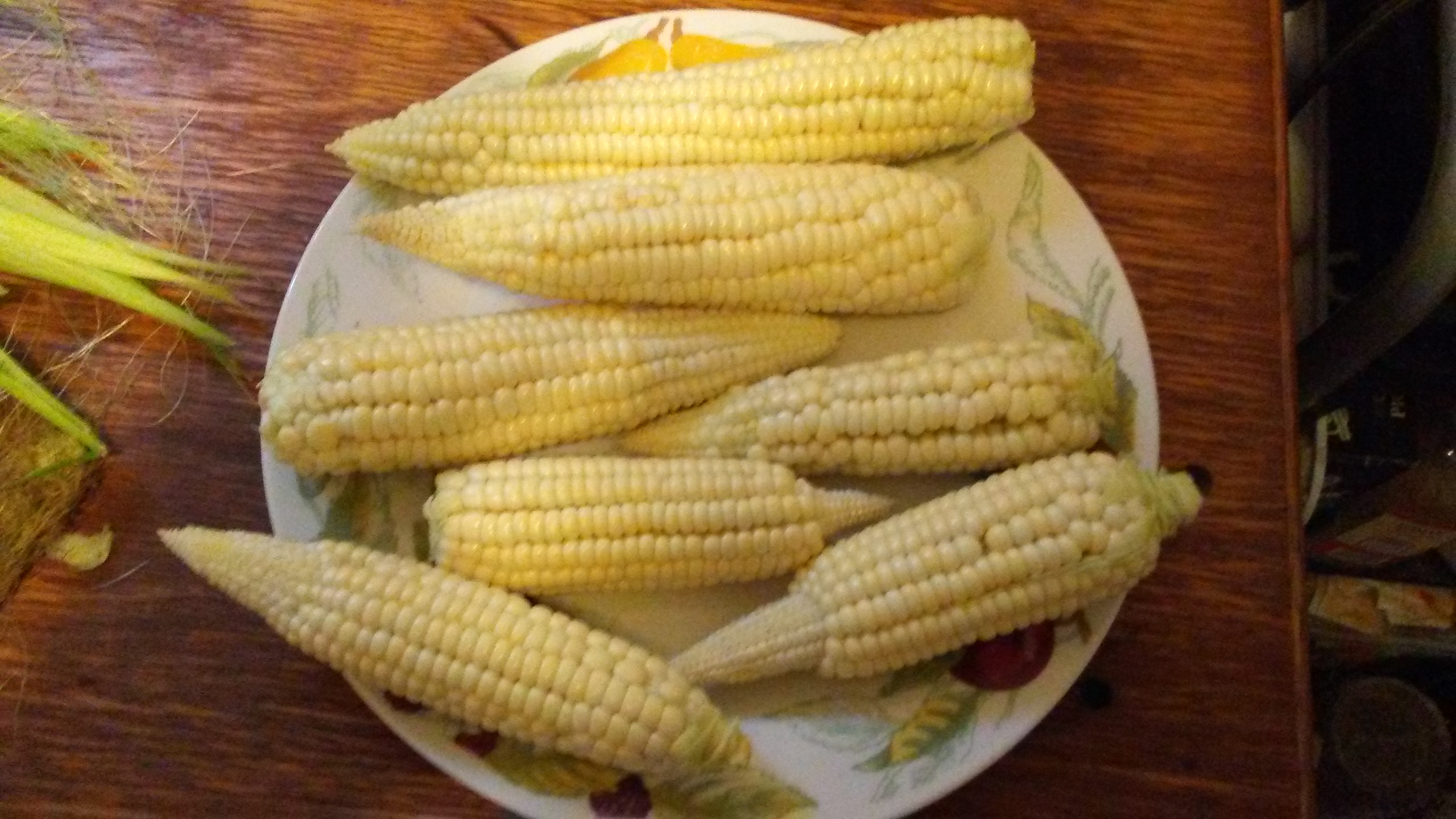I’ll have a new batch of chicken chorizo at the markets this week, but it’s a little different this time. Instead of having it made into brat-sized links with pork casings, I just had them pack it loose in 1-lb. bags.
Also, if I can get to them before the raccoons do, I may have enough pawpaws for a market or two. I’ve counted about 50 fruits so far. They’re still not ripe, though. I remember last year, I was planning to offer pawpaws to my CSA members. One day I looked at them and thought, “they’ll be ready in another week,” an when I came back the following week, all but two of them were gone. I’ll try to check them a little more diligently this year. I’ve also been killing a bunch of raccoons, lately. It appears that the chicken feast the raccoons had last year led to a population boom this year. While shutting in the hens at night, I’ve killed two opossums and maybe six raccoons, most of them young, just in the past several weeks.
I took a head count while the hens were sleeping last week. The older flock, the one that started out with 98 birds, now has 32. The one that had…shoot, I don’t even remember now…I think it was between 175 and 200–it’s now down to about ninety. The smaller flock is the most exposed. I open the door to their hen house during the day and let them roam as far as they dare. (The survivors mostly stay in the yard.) Then I shut them in at night, sometimes finding a raccoon or opossum inside with them. The larger flock has a fenced-in run attached to their hen house, and the door leading from the hen house to the run is open all the time. The run is surrounded by a six-foot fence topped with a strand of electric fence wire. (The electric wire has reduced the rate at which the hens in that house are getting killed.) For a long time after I put up the electric wire, those hens were safe. Then I started seeing chewed-up birds in the run again. I tried tightening the wire and improving the grounding, all kinds of tweaks until one day I discovered a mangled hen on top of the hen house. The coons were going up the side of the house, walking to the edge of the roof, and climbing down one of the trees in the run. Short of doing some major pruning of those trees and putting a series of electric wire hurdles near the edge of the roof, I don’t know what else I can really do short of shutting those hens in at night. I prefer not to do that because of ventilation and water placement issues. So this is (at least one reason) why I haven’t had many eggs to sell lately.
The onions appear to have been overrun by weeds. The weeds are also thick in the beans, beets, and potatoes, but I think they can still be salvaged. The tomatoes have pretty much dried up, but the peppers are valiantly hanging on. They’re not growing, that I can see, but they’re hanging on. I’ve harvested a few tiny pumpkins and acorn squash. You may see them on my market table looking like decorations, but I assure you they’re for sale. Last week I harvested and sold out of tomatillos. I might get one more harvest of those this year, but it won’t be as big. Several weeks ago, I took some lemon balm to the Easton market–only sold two or three bunches of that. We sold several flats of mulberries in June, mostly to A Proper Garden in Powell. I’ve already written of how the snow peas got destroyed this spring. The romaine grew so slowly that by the time it looked like it might be nearly ready to harvest, it was bitter. Eggplants, cucumbers, summer squash, sunflowers, fennel, okra, and carrots never even got in the ground.
On the other hand, I’ve got a patch of greens that’s doing lovely. I have about 60′ of rainbow chard, 60′ of kale, 30′ of collards, 30′ of mustard, and 30′ of turnips. If these aren’t ready before the Easton market ends, they’ll definitely be ready for Clintonville (assuming they don’t get eaten by deer or taken by thieves), seeing as it runs through October and has a final date right before Thanksgiving. I also have a bed of zinnias, cosmos, and bachelor buttons that’s coming along well. I’m hoping to get some blooms before it gets too cold.
I’ve gotten one large puffball mushroom already. There will likely be more if the hens don’t get them first. The walnuts appear to be doing fine, too. I’m hoping to get an earlier start this year making rustic furniture so that I can have some to sell for the holiday shopping season. I’ve also worked out some methods to build it faster.
Now that all that’s out of the way, I want to revisit the topic of last month’s discussion at the Central Ohio Food Forum that I discussed in the post “Words Don’t Cook Rice.” Specifically, I found an article in the New York Times that I feel adds a whole new dimension to the discussion of how people–especially poor people–decide what to eat. It’s a long article, and it may not be at first apparent what it has to do with food, but it’ll become clear by page 3.
For those unlikely to take the time to read a fascinating 7-page article (which seems unlikely if you’re already this far through my ramblings), “Do You Suffer From Decision Fatigue” explores how decision making, willpower, the ability to make decisions with long-range consequences, and blood glucose levels are all connected. And while my principle interest was in how it relates to our discussion of why there’s little demand for vegetables in food deserts, it also addresses something of interest to dieters: in a nutshell, not eating robs you of your ability to resist eating. The more you starve yourself, the more you’ll crave the things that are worst for you, and the more you’ll deteriorate your ability to make wise food choices.


